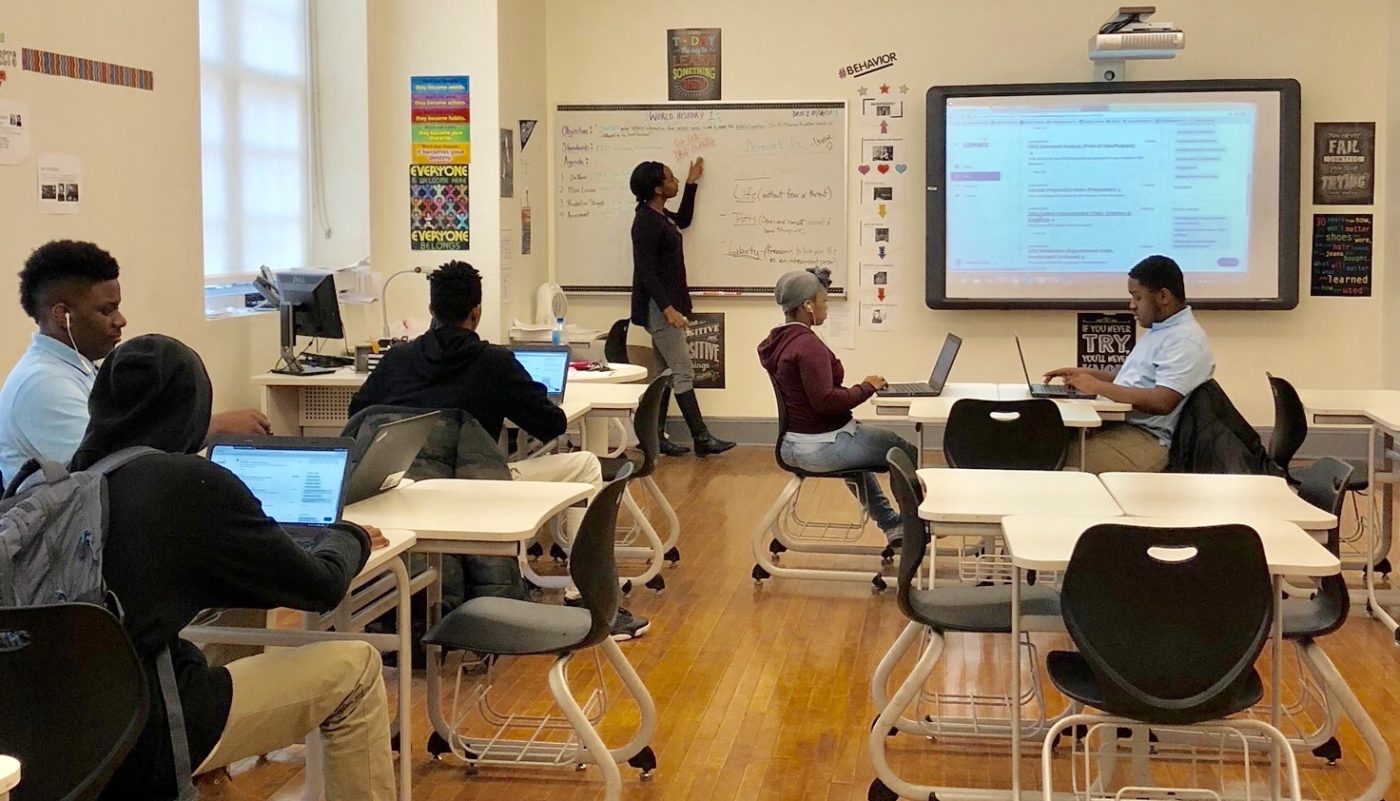
As the Special Education Coordinator for Anacostia High School in Southeast Washington, D.C., I coordinate and instructionally coach a 9-12th grade academy exclusively for students receiving special education services. We began implementing Summit Learning in August 2017, shortly before I took a school term off for my own maternity leave.
While I was away, teachers struggled with these changes, particularly the shift to a grading policy that valued demonstrated mastery over other traits, such as classroom participation and completion. I came back as the unpopular school leader, who did not understand or value the depth of struggle that special education teachers and students were experiencing.
Here’s how I learned how to coach teachers better, win their confidence, and help them see that we could effectively measure and attain student success.
Figuring Out What Special Education Teachers Need
The first step I took to rebuild rapport was to meet with each teacher, individually, for an hour. During those meetings I interviewed them about their experiences with Summit Learning.
I asked them the following questions:
- What has been most successful?
- What is most difficult?
- What has surprised you?
- What do you need with regards to administrative support?
At the same time, I went through and analyzed each special education class’ quantitative data, including student Cognitive Skill and Focus Area scores. Finally, I gathered data through classroom observations and talking to the administrator that implemented first-round observations.
I pulled out the salient themes from both the qualitative and quantitative data, and my co-instructional coach and I built a professional development plan for the entire team and each individual teacher.
Gathering for Accountability
Our coaching plan began with building accountability. My goal was to normalize accountability for school leaders, teachers, coaches, and students. In our work, accountability is not used to shame, but rather as a tool to align our goals and form plans for how to move forward.
We focused on building a plan that used the best teaching strategies for our adult learners, and having the highest impact on instructional progress.
I did this by organizing team data analyses. We instituted monthly data dive meetings, where an overview of each teacher’s data was reviewed by the team. Privately, I emailed each teacher more specific interpretations and suggestions for quick pivots.
We also held restorative circles, in which our teachers addressed concerns by passing around a talking piece for equity of voice. We did these at the beginning of every instructional and data dive meeting, to ensure time to candidly reflect on our processes.
Our first restorative circle included an analysis of an article about accountability. We read the article and discussed it with the goal of deep reflection, listening to others, and open communication.
Data analysis gave us a list of what was and was not working. We addressed the exact things we found were not working, and highlighted what was working.
Our professional development sessions started with guided time to analyze an end goal and make an action plan for achievement, just like the development of every good teaching unit or lesson plan.
As of now, teacher support in our academy includes:
- Monthly data dives
- Monthly instruction meetings
- Monthly teacher observations
- Monthly 1:1 coaching
- Additional 1:1 coaching (as needed or requested)
- Monthly departmental plan days
- Shared pacing calendar
- Co-planning
Feeling Supported and Reinvested
A few weeks ago, special education teachers were asked to gather and discuss individual student progress.
One teacher, in particular, shared about a student who began the year frustrated when his questions were not answered immediately and he was encouraged to productively struggle.
He now is excited to try and figure things out and pushes himself to work independently.
Every story like this one was peppered with habits of success, where one teacher would add on to another, highlighting the scholarly growth someone had made.
Because our teachers felt supported and reinvested in a new model of educating, they were able to facilitate the engagement of our students.
As we review the data we began collecting in December 2017, we have observed a notable increase in “Look Fors” in our special education classrooms. These are observable statements that indicate what should occur in a high-quality personalized learning environment.
We also have seen our students grow since starting to track their progress in December, as evidenced by higher Cognitive Skill scores and higher rates of focus area completion.
Because our teachers felt supported and reinvested in a new model of educating, they were able to facilitate the engagement of our students.
Our growing pains were worth every moment of conflict, struggle, and tension, because on the other side we have confidence, success, and appreciation.
Holding students to high standards starts with building relationships of trust. Hear why relationships of trust between adults and students are critical for learning.

